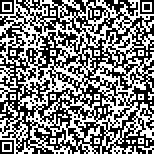下载中心
优秀审稿专家
优秀论文
相关链接
摘要

对可见光至短波红外波段(350—2500nm)冬小麦田间冠层光谱反射率与叶片含氮量间的关系进行了相关分析。结果表明,820—1100nm波段的光谱反射率与叶片含氮量极显著正相关;1150—1300hm波段的光谱反射率与叶片含氮量显著正相关,以上两波段为叶片全氮的敏感波段。对各生育时期叶片全氮与其他生化组分的关系进行了回归分析,并建立了相关的回归方程,显著性检验结果表明,方程具有较高的可靠性。小麦的叶片含氮量可以估算其它生化组分及干物质指标含量,开花期叶片含氮量可用来估测籽粒蛋白质和干面筋等品质指标含量。
The field spectra reflectance data selected at key growth stages of winter wheat were analyzed. It indicated that the wavelength bands related to leaf nitrogen content selected by regression equation located at 820-1100nm and 1150-1300nm. The proper spectrum reflectance form should be established for donating the spectrum reflectance and leaf nitrogen content at different growth stages. The proper forms were as following: the regression equation of derivative form at reviving stage, and the reciprocal form at booting stage and the basic form at ripening stage. The results showed that there were robust correlations between leaf nitrogen content and other leaf biochemical constituents, dried biomass indicators and grain quality indicators. The regression equations between leaf nitrogen content and other leaf biochemical constituents, dried biomass indicators and grain quality indicators were established. The predictions of soluble sugar content, leaf water content, stem water content, leaf starch content, leaf dried weight, plant dried weight, and LAI etc. by leaf nitrogen content were feasible. It has very significant level among grain protein, dry gluten content and leaf nitrogen content at anthesis stage, and no significant correlation of leaf nitrogen content and other grain quality indicators. So it is feasible for forecasting the grain protein and dry gluten content by leaf nitrogen content data acquired by remote sensing.

